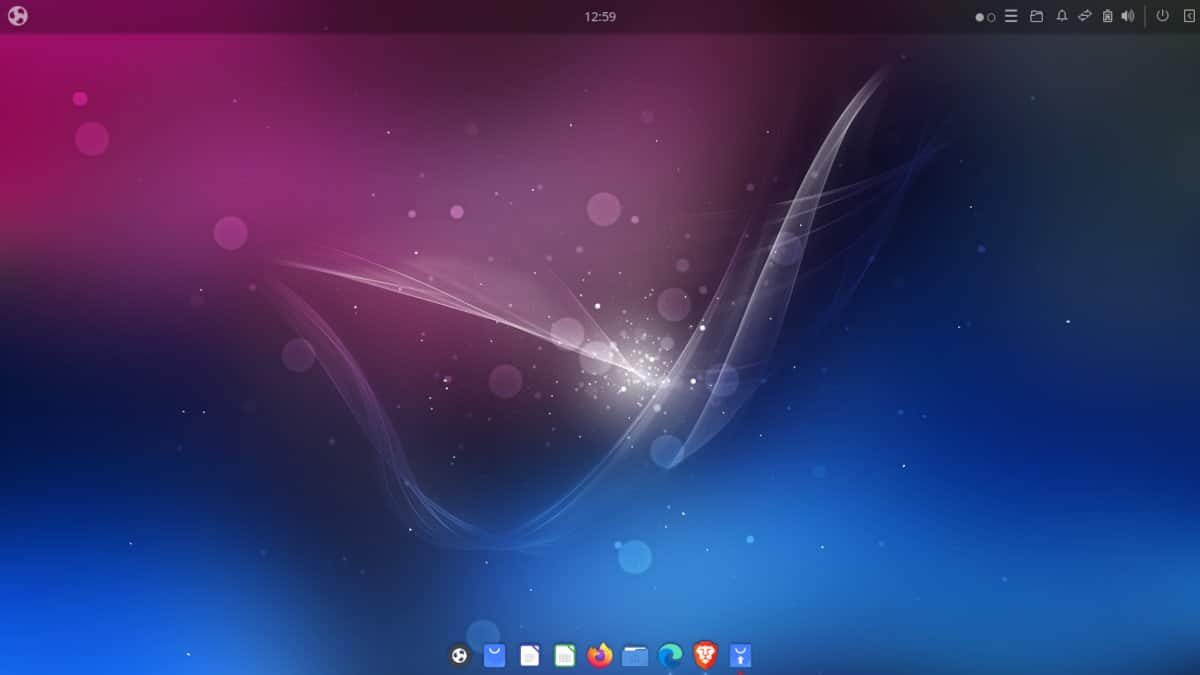
Like my partner Darkcrizt decided to save hims my bi-annual complaint about increasingly bland Ubuntu releases, I'm going to review a release that I liked. The one for Ubuntu Budgie 22.10.
Ubuntu Budgie 22.10 confirms what I have been thinking for a long time, that community developed versions are usually much better than the original. Canonical should do the same as Red Hat and separate Ubuntu into a community and a corporate version.
Features of Ubuntu Budgie 22.10 Kinetic Kudu
For a long time the desktop was tied to the Linux Solus distribution and was based on the GNOME desktop libraries from which it uses some of its applications. Today cTurned into a stand-alone project, it is in the process of shedding both the libraries and the applications.
The main components of this desktop are:
- Budgie Menu: A traditional style menu that in Ubuntu Budgie 22.10 we find in the upper left corner. List apps alphabetically or by category. Also, it can be searched by name.
- raven: From the upper right corner we can control our multimedia devices, see notifications, turn off and restart the computer and control our calendar among other functions.
- Welcome screen: When we start the computer for the first time, it shows us a screen where we can quickly configure our computer by selecting a browser, installing proprietary drivers and choosing a desktop theme.
- Budgie Control Center: A control panel from which we can control all the configurations of the operating system.
- Dock: A lower bar that allows us to quickly access our most used applications.
- Notification bubble: If the applications allow visual alerts, Budgie will show them to us and allow us to interact with them.
- Run dialog: Lets you start an application by typing its name.
- applets: Widgets for specific functions that can be installed on the desktop.
These are the news

In addition to the improvements in the translation and the adaptation of the default theme to that of the Budgie project, we can find the following changes:
- A renewed main menul which gives access to file locations as well as the Budgie Control Center and skin options.
- The control center allows screen sharing via VNC and RDP protocols.
- Better support for fractional scaling.
- Budgie Control Center only supports color profiles if your monitor uses them. Also now you can see the refresh rate of this.
- Applets can now be spaced globally rather than individually.
Applications
Google Maps and Google Calendar are no longer part of the installation. That is why the calendar below the clock is no longer integrated. Other applications such as the calculator and system monitor were changed for those corresponding to the Mate desktop.
Other changes are:
- Lectern replaces Evince as a document reader.
- Font-manager replaces the GNOME font viewer.
- Parole replaces Celluloid as the video player.
- Lollypop + Goodvibes + gpodder replace Rhythmbox for audio and podcast playback.
My take on Ubuntu Budgie 22.10
Getting used to a new desk takes a bit. Almost more than changing distribution
However, Budgie makes the transition very easy. The Welcome screen is very easy to understand, even if it is not completely translated. Calendar users may be surprised that there is no calendar app and Parole and Rhythmbox users may not be comfortable with the new apps, but they are still in the repositories.
Overall, the user experience is very pleasant. Budgie includes a variety of themes for both those who like dark and light themes. One drawback is that switching between windows is not entirely comfortable.
If you like stripped down desktops, this is a good option to consider. It is also if you like accessories. Budgie extras allow you to add functionality according to your needs.
You can download it from here.
Hello. You say this:
community developed versions are usually much better than the original
Umm, sure?, you tried solus os budgie, surely for who knows when, have you tried it now on par with this version of Ubuntu to say such a thing?
I doubt it, because I highly doubt that Ubuntu budgie is better than solus os budgie, since they are the creators of said desktop and therefore budgie is perfectly integrated into solus os, just like cinnamon on Linux mint and just like it happens with Deepin in the Deepin distro, they are perfect integrations, they are like the skin of those Distros and the implementations of those desktops in other Distros are far from the original ones.
So you probably tried solus os at the time, so now grab yourself and install the latest solus os budgie and try it thoroughly, not a quick look and see if you come back later and tell us the same thing.
Greetings.
Hello. The comment refers to Ubuntu releases, not Linux releases with the Budgie desktop.
I like this distro a lot even though its set of icons is not so much, its desktop is very good I think gnome could take note of some of its benefits such as the raven panel, the only bad thing that has happened to me, apart from the versions that are not lts , they have given me some errors for very simple actions, for the rest I really like this distro, and I think they are porting libraries to another language that is not gtk 4 or something like that I am not very knowledgeable on the subject